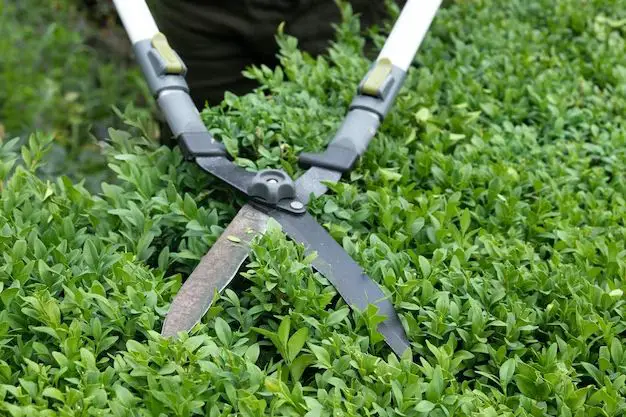When it comes to cutting and pruning plants, having the right scissors can make the job easier and help ensure healthy plants. Not all scissors are created equal when it comes to plant care tasks. The key is finding a good pair of scissors specifically designed for use on plants that will provide clean, precise cuts without damaging stems or leaves.
Page Contents
What to Look for in Plant Scissors
Here are the key features to look for when shopping for the best scissors to use on your plants:
- Sharp blades – Sharp blades that glide smoothly through stems are essential. Look for high carbon steel or titanium blades.
- Smaller blade size – A 2-3 inch blade is ideal for precision cutting and getting into tight spaces on plants.
- Curved blades – A slight curve to the blades makes clean cuts on stems.
- Comfortable grip – Cushioned grips that are comfortable and slip-resistant allow for ease of use.
- Spring action – Spring action helps reduce hand fatigue for continuous snipping.
- Rust resistant – Stainless steel or coated blades resist rusting which can damage plants.
- Holster or sheath – A holster protects the blades when not in use.
Types of Plant Scissors
There are a few different types of scissors designed specifically for use on plants. The best type for your needs depends on the specific cutting and pruning tasks you need to perform.
Garden Scissors
General purpose garden scissors are a pruning essential. They have short, sharp blades ideal for deadheading flowers, harvesting veggies, and light pruning tasks.
Florist Scissors
Florist scissors feature very slender, pointed blades just an inch or two long. This allows for detailed cuts on delicate flowers and stems.
Bonsai Scissors
Scissors made for bonsai have curved blades perfect for working within the tight spaces of these miniature trees and delicate branches.
Herb Scissors
Herb scissors have a straight edge blade designed specifically for harvesting fresh herbs without crushing stems.
Thorn Scissors
Heavy duty shears with thick, blunt ends protect fingers when cutting thorny plants like roses and bougainvillea.
Best Rated Plant Scissors
Based on important features like sharp blades, spring action, comfort, and durability, here are some top rated plant scissors to consider:
| Scissors | Key Features |
|---|---|
| Felco F-2 Classic Manual Hand Pruner | Sharp, precision blades; cushioned grips; lifetime warranty |
| Corona Compound Action Anvil Lopper | Compound action for easy cut; cuts up to 1-inch diameter; shock absorber grip |
| Fiskars Softouch Micro-Tip Pruning Snips | Ultra sharp blades; ideal for deadheading; comfortable grip |
| Vivosun Gardening Hand Pruner | Stainless steel blades; sap groove; safety lock |
| Gonicc Professional Sharp Bypass Pruning Shears | Sharp titanium blades; ergonomic handle; built-in lock |
Tips for Using Plant Scissors
Follow these tips to properly use and care for your scissors to keep plants healthy:
- Always sterilize blades before each use with rubbing alcohol to prevent spreading disease.
- Make cuts at a 45 degree angle just above leaf nodes or buds.
- Only prune off one-third of a plant at a time to avoid shock.
- Cut spent flowers just above a leaf node to encourage new blooms.
- Clean sap and debris off blades after each cut to maintain sharpness.
- Store scissors in a holster or sheath when not using to protect blades.
- Oil joints occasionally to prevent rust and keep spring action smooth.
- Sharpen blades each season or as needed to ensure clean cuts.
Conclusion
Investing in a quality pair of plant scissors designed specifically for botanical use is essential for keeping gardens healthy and thriving. Look for key features like sharp, precision blades, comfortable handles, and rust resistance when shopping. Frequently sterilize, clean, and maintain your plant scissors properly so they last for many seasons of precision pruning and cutting.
